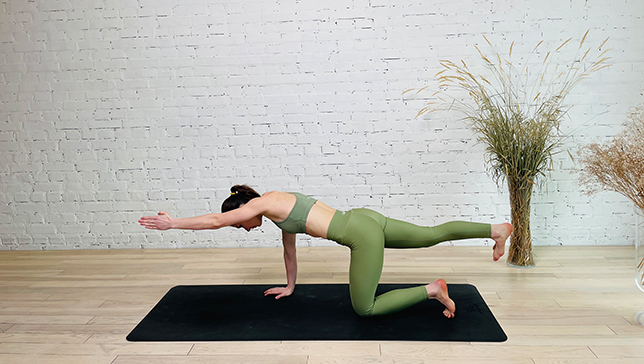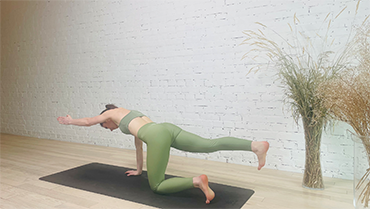Balancing Table Pose - Dandayamna Bharmanasana

Contents
Balancing Table Pose or Dandayamna Bharmanasana is a beginning yoga exercise that pairs movement with stretching to help warm and strengthen the body. When you practice Balancing Table Pose, you gently flow between poses that help to balance each side of your body.
Balancing Table Pose builds abdominal and lower back strength. It warms the body and brings flexibility to the spine, shoulders, and hips, while gently stretching the torso. Because of the balancing challenge, this pose also helps to improve focus, coordination, and overall physical equilibrium. When you coordinate your movement with your breath, the pose also helps to relieve stress, fatigue, and tension.
Pose Detail
- By Type: Arm Balance Yoga Poses, Balancing Yoga Poses, Strengthening Yoga Poses
- Difficulty: Beginners
- Body Position: Seated Yoga Poses
- By Benefit: Yoga Poses For Stress Relief
Step-by-Step Instructions
Benefits and Contraindications
Helps to relieve stress, fatigue, and tension
Tests the sense of balance
Stabilizes and warms up the entire body
Builds abdominal and lower back strength
Knee and wrist injury
Chronic injury back or shoulders
Photo poses in different angles

Modifications and Props For Beginners
- Place a folded blanket under the knees if you have any discomfort.
- If it’s difficult to maintain balance with one leg and arm lifted, try lifting just your leg and then just your arm until you get comfortable in the pose.
- Standing with your hands on a wall can help you find your balance and keep you steady as you work on the pose.
Useful Tips
- Keep your spine in a neutral position throughout the repetitions: Do not let your belly drop, as this can over-arch your lower back and cause back strain or injury. Imagine balancing a cup of tea on the small of your back. Pull the belly in and stretch fingers and toes in opposite directions.
- Keep your gaze at a spot between your palms: Looking forward can crunch your neck, causing tension, pain, and possible injury.
- Your shoulder blades should be broad: Your shoulders should be drawn away from your ears. Keep your collar bones broad, as well. This helps to protect your neck, while also increasing flexibility and strength in your shoulders and chest.
- Be aware of your breath and its coordination with your movements: Breathe smoothly and evenly throughout the practice.
Frequently Asked Questions
Yes, Balancing Table Pose can be modified to suit beginners by using props such as a yoga block or practicing against a wall. Beginners can also start with lifting one limb at a time before progressing to both arm and leg lifts.
Yes, those with wrist or knee pain can modify the pose by using a folded towel or blanket under their knee or hand to provide extra cushioning and support.
Common mistakes to avoid in Balancing Table Pose include hunching your shoulders, arching your back, or lifting your leg or arm too high, which can compromise your stability and balance.
Balancing Table Pose can be practiced during pregnancy with modifications and under the guidance of a qualified prenatal yoga teacher. Pregnant women should avoid putting pressure on their abdomen and modify the pose to suit their changing bodies.
Variations
- Tabletop With Knee Lifted
- Balancing table With Wall
- Twisted Balancing Table
- Hovering Table Pose